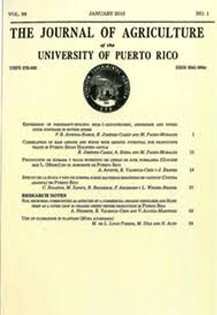Abstract
The 'Núcleo de Productores de Cítricas de Puerto Rico' produces peeled oranges as its main product; however, this product is highly perishable. The main objective of this research is to compare different edible film treatments for extending the shelf life of fresh peeled oranges stored at 4 ± 0.5 °C. Four edible film treatments were evaluated: NatureSeal® (NS); NatureSeal® with 2% potassium sórbate (NS+PS); hydroxypropyl methylcellulose with 2.5% of glycerol (HPMC); hydroxypropyl methylcellulose with 2.5% glycerol and 2% potassium sórbate (HPMC+PS); and a control treatment (fruit without edible film). Aerobic microorganisms, yeast and molds were counted on petri plates. Weight loss, external appearance, texture, color, pH, water activity (aw), °Brix, vitamin C content and acid titration were measured in the treatments. The analyses were performed at 0, 3, 7, 14, 21, and 28 days after application of the edible film treatments. Overall, edible films with PS had the lowest microbial counts. There were no significant differences among edible films regarding weight loss, texture, pH, aw, °Brix, vitamin C content and acid titration. The HPMC edible films had the best external appearance. Overall, this study found that the edible film HPMC+PS produced the best results.Downloads
Download data is not yet available.

